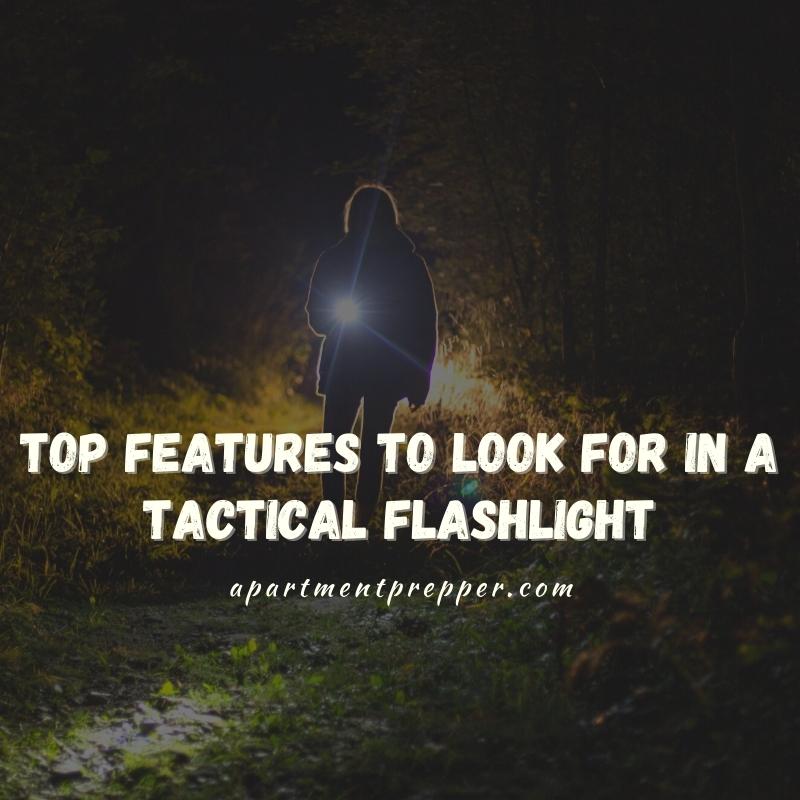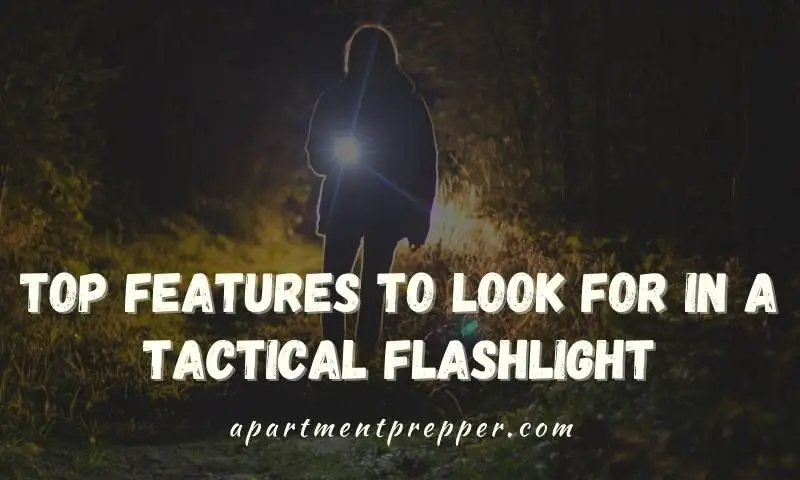Written by Chris Sherman
If you aren’t an avid camper, you might be of the opinion that flashlights simply aren’t necessary. There’s a good chance that your cell phone has a built-in flashlight already, so why would you need a separate piece of equipment?
We all know how fast our cell phone batteries can drain, especially when we’re using the flashlight. What happens if a storm knocks the electricity out for a few hours, and all you’ve got for light is a phone? What about if you get a flat tire at 10 p.m., and you end up having to install the spare tire in the dark? We never know when these situations will happen, and there’s no telling whether your phone will have enough battery left to both use the flashlight, and get in touch with someone who can help you out.
With this in mind, let’s go over the most important features in a flashlight, and some of the ways it could get you out of a tricky situation.
Brightness and Longevity
A flashlight should have between 300 and 1,000 lumens – anything less is just not strong enough in most situations, and anything more will probably wash out the finer details of what you’re looking at. Some flashlights can actually be adjusted, so you can keep it on the lower settings to save battery until you need a stronger beam.
The stronger a flashlight’s beam is, the faster the battery will run down – it’s simple math. Make sure you get a flashlight that will give you hours of light before it starts dimming. You should be able to find a flashlight’s runtime on the packaging or online listing, and in online reviews.
Power Source
Most flashlights run on batteries, but you can also find ones that can be recharged with solar power, flashlights with rechargeable batteries, and even Faraday flashlights that charge when you shake them.
For a flashlight that’s powered by batteries, make sure you always have spare batteries on hand. If you’ve already thought ahead to get a flashlight, it only makes sense to get spare batteries as well.
If running out of battery power is the weakness of conventional flashlights, then doesn’t that make solar flashlights a better choice? Sure, if you can rely on having sunlight 24/7. It’s sort of like having unlimited spare batteries, but only being able to replace them when the sun is shining. Solar power won’t really give you the reliability you’re looking for.
Rechargeable flashlights are a solid choice as long as you know you’ll have a power source. You can even get ones that you can charge both with electricity and with the sun – a great way to cover all the bases.
Faraday flashlights have a battery that charges when it’s shaken back and forth; mid-range options will give you about 5 minutes of light per 30 seconds of shaking. However, the brightness just can’t compare to the brightness of battery-powered flashlights. What’s more, there are plenty of situations – like changing a tire in the dark, for instance – when your flashlight demanding attention every few minutes could really be a hassle.
Size and Weight
If you want to carry around your flashlight in a purse or backpack, then a smaller size would be the best way to go. For something that you’ll be keeping in your car, you could go for a larger flashlight that’ll cast a broader beam. You can get just about any size flashlight no matter what your budget; the size you get is completely up to you.
Extra Features
One way for a particular flashlight to stand out from the pack is by offering extra settings or functions. There are flashlights with settings for strobe lights, an SOS signal, red light, widening or narrowing the beam, incandescent light, or even a stun gun function. There are even options with built-in compasses, emergency whistles, and bottle openers! Flashlight designs have gotten creative in the last few years, so you’ve got plenty of options to consider when looking for your next flashlight.
Apart from all the bells and whistles, many flashlights also have features like being waterproof or water-resistant, scratch-proof, or shatter-resistant. Some models come with rubber grips, ergonomic texturing on the handle, or loops at the end of the handle for easy carrying. Not all of these features are essential, but they can be a big part of what makes a good flashlight.
When would I need to use a flashlight?
The main use of a flashlight is to provide light, obviously; but there are many situations when a flashlight can do more than just provide light. If your flashlight is big or bright enough, it could actually be an effective self-defense tool, either as a club-style weapon, or to blind the potential attacker. You could also use the flashlight to break ice or glass, especially if it’s sturdy enough to withstand considerable force. If you need to signal for help, use it to flash the Morse code symbols for SOS, or use the emergency whistle if your flashlight has one.
Thanks to all the options on the market, you have a ton of choices. A trusty flashlight is kind of like a good pocketknife – you won’t necessarily need to use it every day, but when you do need it, there’s simply no substitute.

EDC Tactical Flashlight
The battery-powered E300 EDC Tactical Flashlight is a very good option to consider. The E300 offers 300 lumens, three modes (high, low, and strobe). It’s also equipped with a zoom lens that allows you to brighten your target with accuracy.
During emergencies there is a handy strobe light to help you reveal your location and works as a distress signal.
This light is made of an aluminum housing and has a long-running LED. It is both water-resistant and shock proof.
About the author:
Chris Sherman is an avid prepper and outdoorsman. When he’s not busy writing articles, he can generally be found in the woods or on the water with his son Rich and his yellow lab named Bo.



Interesting write-up. LED bulbs have certainly changed the flashlight universe, no question about that. But do you really need a minimum of 300 lumens for a light to be useful. A candle only produces 13 lumens and can, in many circumstances, be quite useful. I wrote a book called “The Amazing 2000-Hour Flashlight” and a follow-up book entitled “The NEW 2000-Hour Flashlight.” There are only 167 hours in a week (24 x 7 = 167). So a 2000-hour light could be put in a dark hallway (or a fallout shelter) and be left running night and day for 3 months on the same battery. Or you could use it to find the car key you dropped. Or change a car tire. Or cook supper. Or deliver a baby at midnight. All useful stuff. Here’s a link: https://www.amazon.com/New-2000-Hour-Flashlight-Ron-Brown-ebook/dp/B00TGMNY2E/ref=sr_1_1?dchild=1&keywords=the+new+2000-hour+flashlight&qid=1608164686&s=digital-text&sr=1-1
Hi Ron, Glad you saw the article, I was hoping you would! Good to know a light below 300 lumens can still be useful-the 13 lumen candle is a good example. Thanks for the comment.